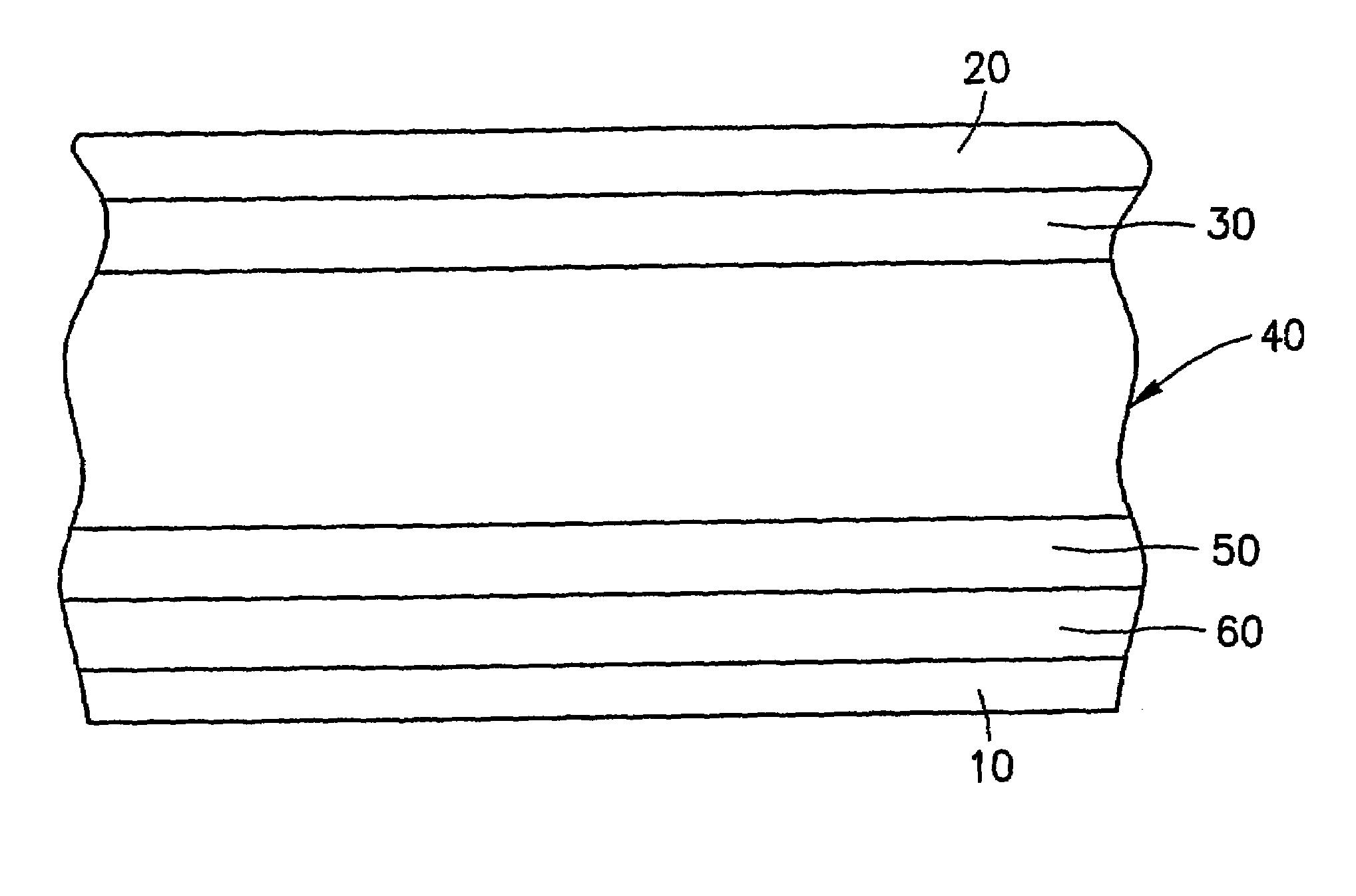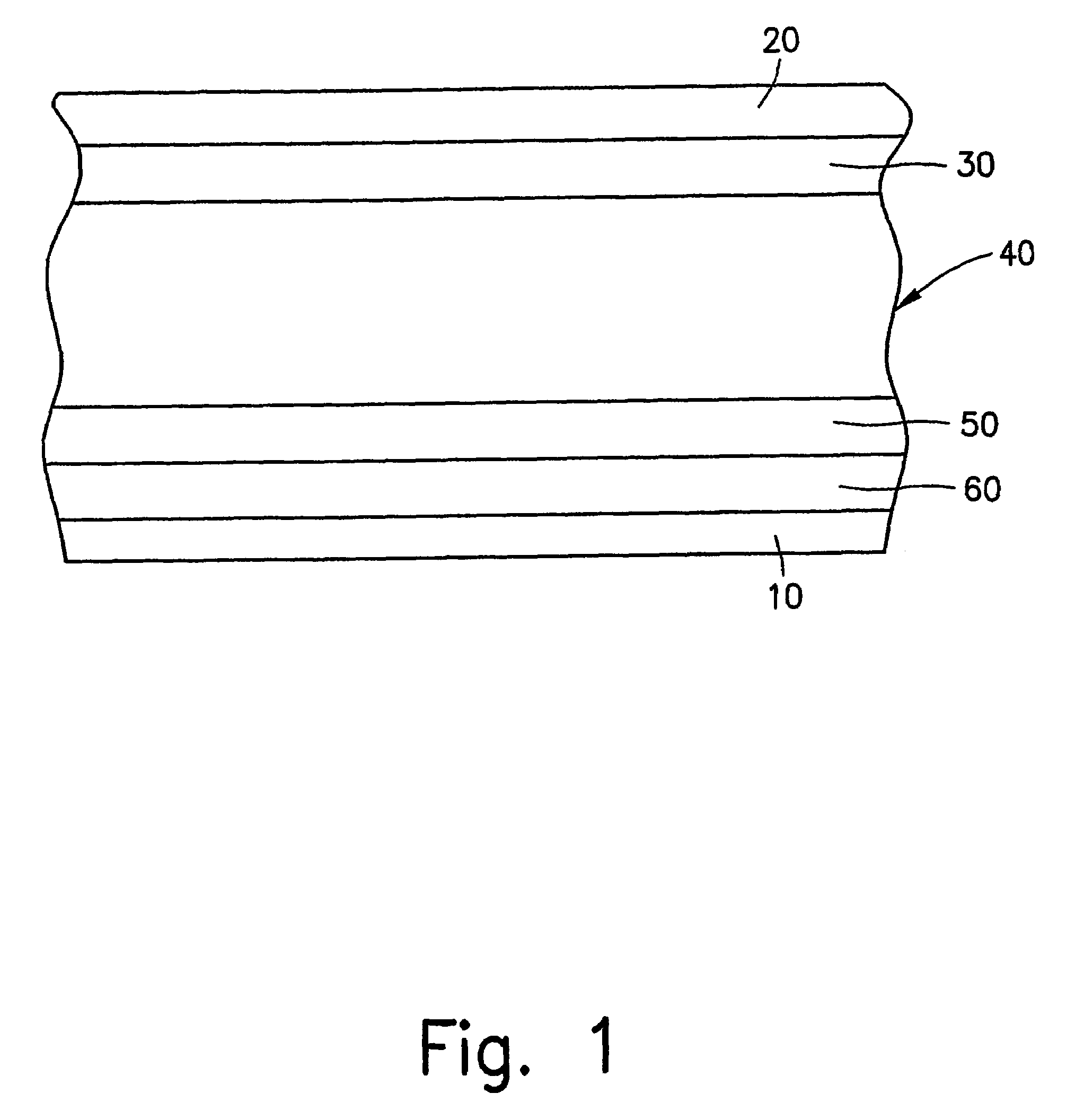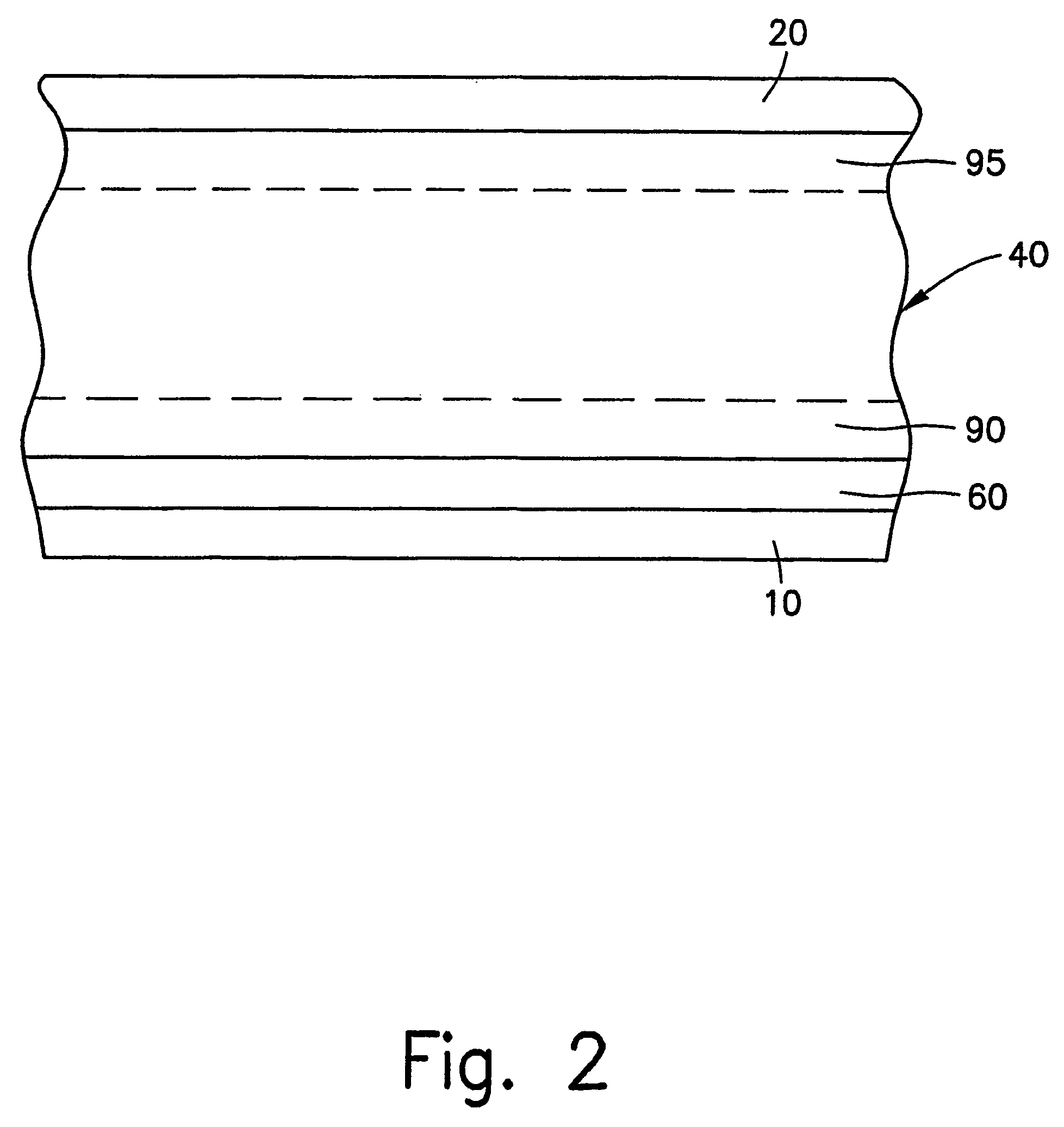Materials and devices for blue phosphorescence based organic light emitting diodes
a blue phosphorescence and organic light-emitting diode technology, applied in the direction of organic semiconductor devices, thermoelectric devices, luminescent compositions, etc., can solve the problems of energy loss, energy loss, and inability to convert excitons in fluorescent devices to energetically unfavorable higher singlet excited states,
- Summary
- Abstract
- Description
- Claims
- Application Information
AI Technical Summary
Benefits of technology
Problems solved by technology
Method used
Image
Examples
Embodiment Construction
[0023]Embodiments of the present invention will be described with reference to the drawings. It is understood that these embodiments are intended as illustrative examples of the invention, and do not limit the invention.
[0024]The OLEDs made according to the present invention include phosphorescent dopants dispersed in the device's emissive layer, preferably capable of achieving internal quantum efficiencies approaching 100%. The emissive dopants in these devices typically contain heavy transition metal atoms, such as, for example, iridium or platinum, that induce efficient radiative relaxation of triplet excitons. Although iridium and platinum have provided high quantum efficiencies, other heavy metals such as osmium or gold may also be used. These phosphorescent dopants thus can take advantage of substantially all the excitons available within the emissive layer of the device, resulting in much higher efficiencies compared to devices using only singlet excitation to induce luminesc...
PUM
| Property | Measurement | Unit |
|---|---|---|
| energy gap | aaaaa | aaaaa |
| emission peak | aaaaa | aaaaa |
| emission peak | aaaaa | aaaaa |
Abstract
Description
Claims
Application Information
 Login to View More
Login to View More - R&D
- Intellectual Property
- Life Sciences
- Materials
- Tech Scout
- Unparalleled Data Quality
- Higher Quality Content
- 60% Fewer Hallucinations
Browse by: Latest US Patents, China's latest patents, Technical Efficacy Thesaurus, Application Domain, Technology Topic, Popular Technical Reports.
© 2025 PatSnap. All rights reserved.Legal|Privacy policy|Modern Slavery Act Transparency Statement|Sitemap|About US| Contact US: help@patsnap.com



